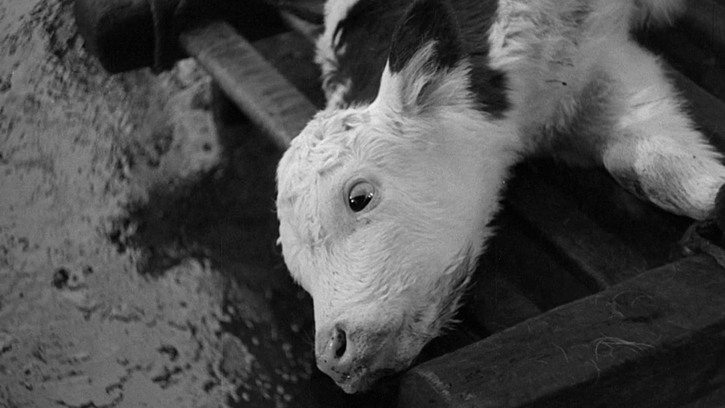LE SANG DES BÊTES
- 1948
- France
- 21 minutes
- French
Presented by Éric Le Roy, head of Collections at the CNC – Centre national du cinéma et de l’image animée
At the gates of Paris, you meet lovers and children. There is also the unusual within the real, the poetic, the fantastic. Incredible objects… We also encounter death and anguish. At the Vaugirard slaughterhouses, near the Ourcq canal, death is a daily occurrence. Horrible too: the blood flows, the heads come off, the bones burst, to the point of disgust. Horse bled, cow skinned, calves and sheep decapitated. However, the work is done there with skill and carelessness. With the night come tenderness and calm.
The restorer – CNC – CENTRE NATIONAL DU CINÉMA ET DE L’IMAGE ANIMÉE
Created by the law of October 25, 1946, the “National Center for Cinema and the Moving Image” (CNC) is a public administrative establishment placed under the supervision of the minister responsible for culture, and headed by a president. The CNC has legal personality and is endowed with financial autonomy. It provides unity for the design and implementation of State policy in the fields of cinema and other moving image arts and industries, in particular those of audiovisual, video and multimedia. The Cinematographic Heritage Department, located in Bois d’Arcy, is in charge of the direct and indirect management of French cinematographic heritage activity. It manages the conservation, safeguarding, restoration and cataloging of films on all media, entrusted to the CNC. His laboratory manages the technical issues specific to old films and carries out photochemical and digital restoration work.
Photo credit: © All rights reserved
- Production : Forces et voix de France
- Restorer : Centre national du cinéma et de l'image animée, in collaboration with La Cinémathèque française
- Contact : Éric Le Roy - eric.le_roy@cnc.fr
- Progress stage : Restoration completed
- Availability Date : Available
